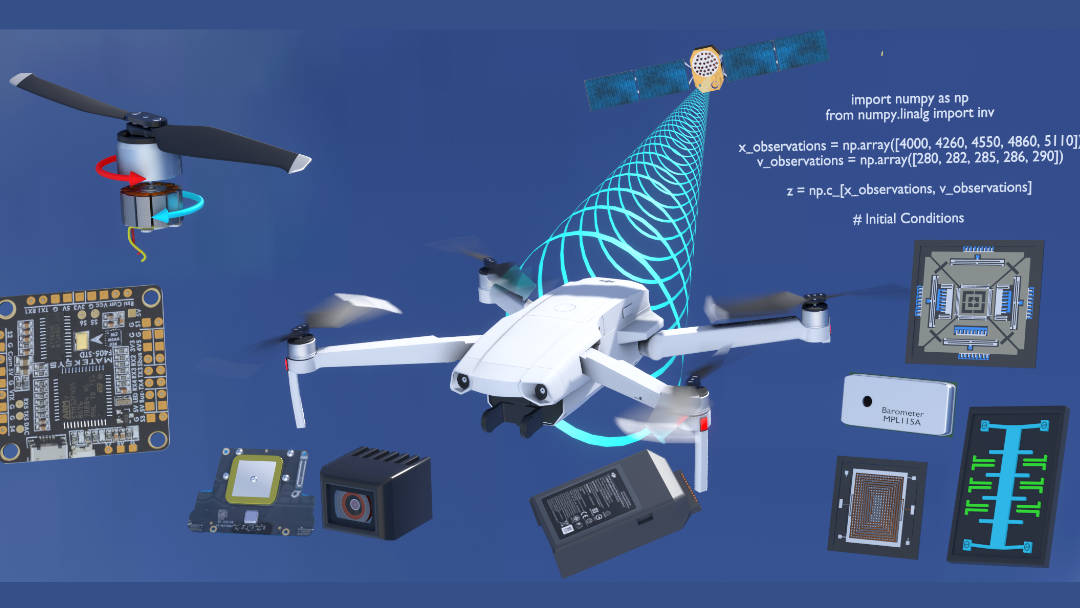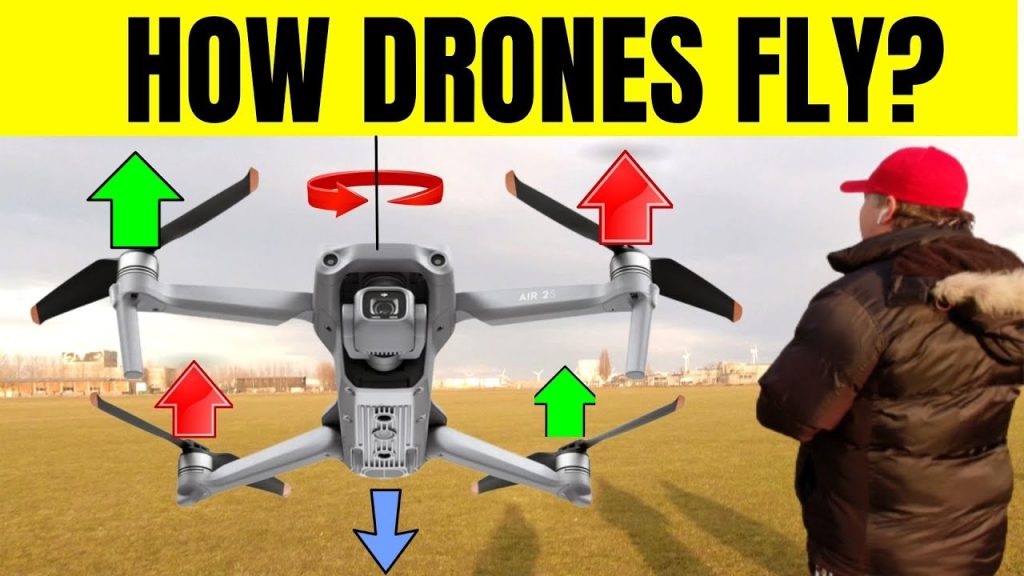Physical Address
304 North Cardinal St.
Dorchester Center, MA 02124
Physical Address
304 North Cardinal St.
Dorchester Center, MA 02124


This post may contain affiliate links. As an Amazon Associate, we may earn commissions from qualifying purchases.
Have you ever wondered how drones, those fascinating flying devices, manage to take to the skies and perform a myriad of tasks? Drones, also known as Unmanned Aerial Vehicles (UAVs), have transformed the way we approach tasks ranging from photography to delivery services, and even scientific research. Understanding how drones work can open your eyes to a world of technological advancement and innovation.
Drones are aircraft without a human pilot onboard. They can be controlled remotely by a pilot on the ground or autonomously through onboard computers. Drones come in various shapes and sizes, each tailored to specific uses, making them versatile tools across numerous industries.
To understand how drones function, it’s essential to explore their key components. Each component plays a significant role in the drone’s operation:
The flight of a drone involves complex physics and engineering principles. Understanding the basics can demystify how these incredible machines operate.
Just like any aircraft, a drone’s ability to fly relies on balancing four forces:
By adjusting these forces, a drone can hover, ascend, descend, and move in various directions.
For effective flight, a drone must maintain stability. This is achieved through:
The flight controller processes data from these sensors and adjusts the propeller speeds to correct any instability, allowing for smooth and controlled flight.
Drones vary widely depending on their design, size, and purpose. Each type has unique characteristics that cater to different applications.
These are the most popular type, known for their versatility and maneuverability. They have multiple rotors, with the quadcopter (four rotors) being the most common. Multi-rotor drones are widely used for aerial photography, surveillance, and recreational purposes.
Unlike multi-rotor drones, fixed-wing drones resemble traditional airplanes. They require a runway or catapult launch and can glide through the air, providing longer flight times. These drones are used for mapping, surveying, and agricultural monitoring.
With a design similar to helicopters, single-rotor drones have one main rotor and a smaller tail rotor. They can carry heavier payloads and have longer flight times compared to multi-rotor drones. They are used in applications like LiDAR scanning and military operations.
Combining the features of multi-rotor and fixed-wing drones, hybrid drones offer vertical takeoff and landing capabilities with the efficiency of fixed-wing designs. These drones are suitable for longer flights and missions requiring varied operational environments.

Communication is crucial for drone operation, enabling control and data transmission between the drone and the controller.
Most drones are operated using a remote control that communicates via radio waves. The controller sends commands to the drone for navigation and operation.
FPV technology allows you to see from the drone’s perspective using a camera mounted on the drone. The live video feed is transmitted to a screen or goggles, providing an immersive flying experience, which is particularly useful in drone racing and photography.
Some drones can operate autonomously using pre-programmed flight paths and GPS technology. These drones can be set to follow specific routes or hover in designated positions, making them valuable for tasks like surveillance and search missions.
Drones have expanded beyond hobbyist use, becoming vital tools in numerous sectors. Understanding the importance of drones can highlight their impact on society.
Drones have revolutionized the photography industry by providing unique aerial perspectives. Film and photography professionals use drones to capture stunning landscapes and action shots that were previously impossible or costly to achieve.
Companies are exploring drone technology for delivery services, promising faster and more efficient deliveries in urban areas. These drones can navigate traffic and deliver packages swiftly, transforming the logistics industry.
Drones equipped with sensors and cameras are used to monitor crop health, assess soil conditions, and even apply pesticides and fertilizers. This technology helps farmers optimize yields and reduce costs.
In emergencies, drones can quickly survey large areas, providing critical information to rescue teams. They can reach areas that are difficult for humans to access, aiding in locating missing persons and assessing disaster damage.
Drones are deployed for monitoring wildlife and natural habitats, offering valuable data for conservation efforts. They can track animal movements and document changes in ecosystems, helping to protect endangered species.
Drones have significantly impacted military strategies, offering reconnaissance, surveillance, and targeted strike capabilities without risking human lives. Military drones vary from small surveillance units to large combat-ready aircraft.

As technology continues to evolve, the potential of drones expands. The future of drones promises more advanced applications and integration into everyday life.
Advancements in artificial intelligence, machine learning, and sensor technology are paving the way for more autonomous and efficient drones. These technologies could lead to drones capable of complex decision-making processes without human intervention.
Drones are anticipated to play a role in urban air mobility, transporting people and goods above the congested city streets. Companies are developing drone taxis and cargo drones, hinting at a future where drones become a standard mode of transportation.
As drone usage increases, regulations will evolve to ensure air traffic safety. Balancing innovation with security will be crucial in integrating drones seamlessly into the airspace.
While aerial drones capture most attention, underwater drones are just as fascinating. Also known as Unmanned Underwater Vehicles (UUVs) or ROVs (Remotely Operated Vehicles), these drones explore and operate underwater environments.
Underwater drones function similarly to their aerial counterparts but are designed to withstand water pressure and navigate aquatic environments.
Underwater drones use propellers for movement but require more force due to water density. They often have multiple thrusters for precise maneuverability.
To achieve different depths, underwater drones adjust their buoyancy. This can be done using ballast systems similar to those in submarines.
Navigating underwater poses unique challenges due to the limited range of radio waves. Underwater drones rely on sonar and acoustic signals for communication and navigation.
The payload capabilities of underwater drones enable diverse applications in marine exploration, research, and industry:
| Capability | Application |
|---|---|
| Cameras and Lights | Marine photography and videography |
| Sonar Systems | Seafloor mapping and object detection |
| Manipulator Arms | Sampling, and interaction with underwater objects |
| Environmental Sensors | Monitoring water quality and temperature |
| Payload Bays | Carrying additional equipment or samples |
Understanding how drones work can significantly expand your appreciation for these technological marvels. From flying high above landscapes to exploring the depths of oceans, drones extend human capabilities in ways previously unimaginable. As technology progresses, drones will likely become even more integrated into daily life, delivering innovation and efficiency across various sectors. Embracing this technology opens up endless possibilities for discovery, creativity, and problem-solving.